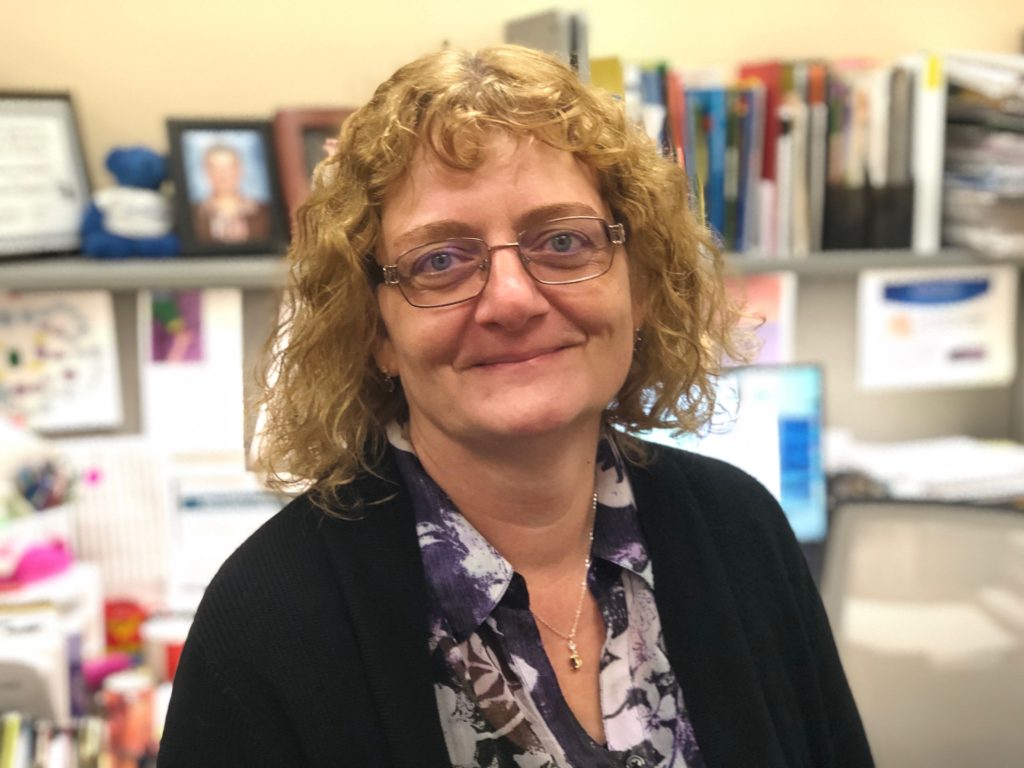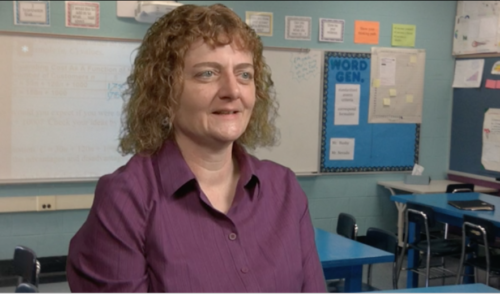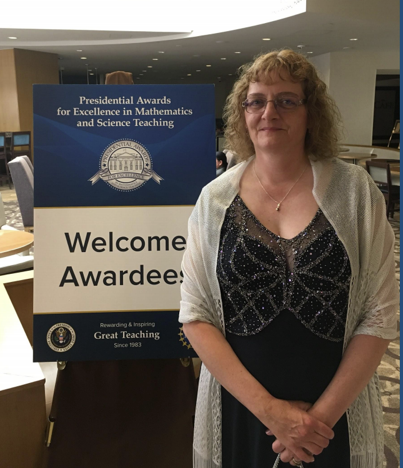

By Jo Mathis/AAPS District News Editor
Anne Marie Nicoll-Turner was honored last week by the AAPS Board of Education for winning a Presidential Award for Excellence in Mathematics and Science Teaching (PAEMST).
Administered by the National Science Foundation (NSF) on behalf of the White House Office of Science and Technology Policy, PAEMST recognizes outstanding teachers for their contributions to the teaching and learning of mathematics and science.
Nicoll-Turner attended elementary schools in Dearborn and Livonia before graduating from Bentley High School. She then earned a bachelor’s degree in mathematics education and a master’s in middle school curriculum from Eastern Michigan University, with additional coursework at Michigan State University.
In 1989, Nicoll-Turner began teaching at Clague Middle School. After five years there, she went on to teach at Slauson Middle School for five years, before finishing her classroom teaching at Tappan Middle School.
Nicoll-Turner began work in AAPS’ curriculum and instruction department part-time during the 2015-2016 school year while teaching part-time. Beginning in the 2016-2017 school year, the curriculum work became full time.
As the district department chair for secondary mathematics, Nicoll-Turner implements regular professional development for the math teachers. This work includes regular monthly meetings, book group meetings, work with Ann Arbor community center partners, coordinating middle school testing out, and supporting teachers in their classroom instruction.
She has helped to revise the middle school math support classes, and implement new curriculum at the middle school level and the Intensified Algebra 1 course at the high schools. She has worked with the authors of the Connected Mathematics Project for more than 20 years. She has also taught courses as an adjunct lecturer at the University of Michigan, Dearborn campus, and at Eastern Michigan University.
Nicoll-Turner lives in Hamburg with her husband, Brad, and sons, Jacob and Hunter. They have two greyhounds. She enjoys gardening, camping, and canoeing.
What inspired you to become a teacher? I had a great teacher in both third grade and seventh grade who helped me see the creative side of mathematics and to really fall in love with math. I originally majored in special education for the hearing impaired, and my grandmother was profoundly deaf. She spent many hours working math problems for me. When I finished my special education student teaching, the love of math pulled me back to change that minor into a major and teach math.
Why middle school? I had great models of middle school teachers as a student, and I think the memories of those teachers and their investment in my education helped me make the decision to teach middle school.
What’s the best compliment anyone could give you? I have some wonderful notes and cards from students, pointing out something that we did together that really helped them understand math. Those are the best compliments I could receive, and I have kept them all. In my current job, the best compliment would be that I helped another teacher really reach a child who struggled.

What are your favorite memories of teaching at Tappan? I have lots of specific memories of the “aha” moments from students. One of my favorite memories is when two boys got up and went to the board and had a “math fight,” each working hard to listen to the strategy of the other, but loudly explaining that they were right. Hugs from some of the students who struggled but hung in there and got it are also great memories.
Describe an average workday today. My work days vary greatly now. Some days, I meet with teachers in their building to plan for new lessons and then help them implement them. Some days I run professional development meetings for part or all of the day. Occasionally I substitute for a teacher to allow them to go observe another teacher, and some days I watch teachers teach so I can coach them to improve some part of their instruction. I also spend quite a few days on coordinating exams and getting them uploaded into Illuminate so that teachers can use the data generated there to improve instruction.

What’s the happiest part of your day? Seeing that look on a child’s face when they figure out something they have struggled with in math class is a happy part of my day.
What gadgets, apps, tools or websites can’t you live without: Right now, the whole Google suite is invaluable. Every component I try out turns out to be amazingly helpful. The National Council of Supervisors of Math website and National Council of Teachers of Mathematics website are really helpful, too. There are great online graphing calculators, such as DESMOS, but I still hang on to my handheld one. CODAP and GeoGebra are wonderful for instruction.
What do you miss about teaching, and do you think you’ll return to it? Building relationships with students is something I miss. At this time, I love working with teachers to help them improve their instruction, so I’m not sure I will return to the classroom. My current job is really why I chose a master’s degree in curriculum and is a nice change after 30 years in the classroom.
You help teachers incorporate more formative assessment and technology into their classroom instruction. In what ways? We are in the process of creating a technology integration plan for each math course in the district. Teachers are working together to pool their best resources.
What’s most exciting about your professional life right now? Your personal life? Professionally, we have finally rolled out the curriculum adoption that we planned for over a two-year time span. Helping teachers think and plan instruction that meets the vision of outstanding equity-based math instruction is exciting. In my personal life, seeing my children grow up is exciting. Hunter just started classes at Washtenaw Community College, and Jacob is in fifth grade. The times flies so fast!

Be the first to comment